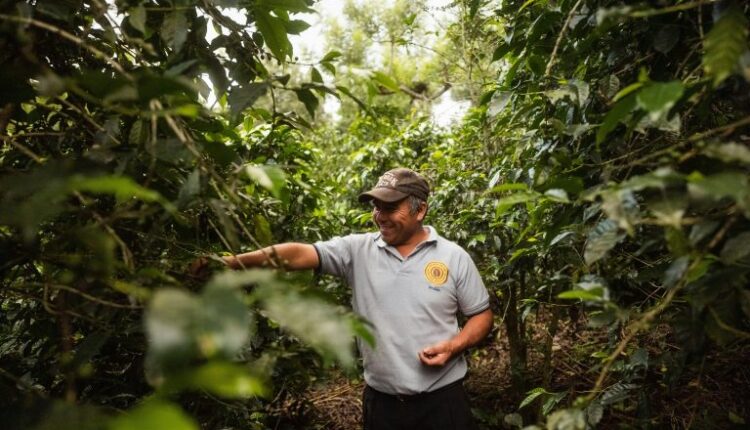A Look At How Coffee Farmers Are Facing Climate Change – CoffeeTalk
José Marcelino Estrada, a small coffee farm owner in Guatemala, has been working to make his farm more climate resilient in hopes of passing it on to his children. Climate change threatens to upend his livelihood and his legacy. For generations, farmers in Guatemala’s coffee-growing highlands have relied on nature’s steady rhythms to guide their planting and harvesting. Now, rains that once arrived like clockwork are increasingly erratic, temperatures are rising, and punishing dry spells are punctuated by torrential downpours, disrupting the delicate timing needed for coffee to flower and bear fruit.
Warmer, wetter conditions have also unleashed outbreaks of coffee leaf rust, a fungal disease that wiped out coffee farms across Central America a decade ago, causing more than US$ 3 billion in damages and leaving nearly 2 million coffee workers without a job. In a quest to combat coffee rust (la roya in Spanish), a Starbucks 100 million trees initiative supported by Conservation International has delivered climate-resilient coffee seedlings to more than 40,000 farmers across Guatemala, Mexico, and El Salvador. At the heart of this effort is the Marsellesa, a hardy arabica varietal developed by scientists in France and Nicaragua to withstand a warming climate.
Around the world, farmers are experimenting with new strategies to stay ahead of climate impacts, but few crops are as vulnerable to climate change as coffee. As growers rethink how and even where they cultivate their beans, the program is one in a series of innovations and adaptations aimed at blunting future climate threats. “No one has a playbook for how to deal with climate change; farmers are just trying to stay one step ahead of it,” said Raina Lang, who leads Conservation International’s coffee program. “They’re trying different strategies — from planting climate-resilient varieties, to reintroducing traditional methods of controlling rain and soil erosion.”
In Central America, where coffee is deeply woven into the economy and cultural identity, the stakes are profound. Production has dropped in recent years as warmer and wetter conditions reduce the areas suitable for growing arabica coffee.
To qualify for the program, farmers must adhere to an ethical sourcing program developed by Starbucks and Conservation International to promote sustainable farming, fair wages, and environmental protection. Upon deciding to enter the program, farmers agree not to plant donated coffee trees in forested areas, maintain existing native shade trees, and adopt practices that protect the soil and minimize erosion.
Each year, Lang travels to Central America to visit dozens of coffee farms of all sizes, ensuring that healthy seedlings have arrived, program safeguards are upheld, and mature Marsellesa trees are thriving. She also listens to farmers’ feedback on the program, which helps adjust the current program and inform future programs that support climate adaptation.
La Pastoria, a sprawling 633-hectare (1,564-acre) coffee farm in Guatemala, has been able to replace old trees susceptible to coffee rust with Marsellesa trees thanks to Starbucks’ 100 million trees initiative. The terraced coffee grove is home to about 80 species, including armadillos, agoutis, deer, toucans, owls, and hawks. Operations manager Carlos Virula López, operations manager at the farm, explains that this is not a plantation, but a forest that produces coffee.
Despite record coffee prices on the global market, large farms like this one are being sold off as climate change and a persistent labor shortage make it increasingly difficult to keep them running. Their lands are being carved up into housing lots or divided into smaller parcels for hardier crops better suited to changing conditions. For ecosystems like this one to endure, “you have to truly care about the coffee. You have to love it, in the good times and the bad.”
Maintaining the environment, the flora and fauna, is not just for my generation; it’s for the generations to come. In lush, coffee-growing regions of Central America, when yields fall or prices fluctuate, entire communities feel the effects. In El Salvador, coffee used to drive the economy, making up 40% of export earnings in the 1990s. But over the past two decades, production has dropped by more than half.
In a quest to adapt to climate change, Salvadoran farm manager Danilo Jiménez has turned to new and old techniques. He invested in digging pits in the ground, in a zigzag pattern down the hill, to catch the water and keep the soil from washing away. The results were undeniable: less erosion, healthier trees, and a more resilient farm.
For Jiménez, climate adaptation means blending ancient methods with modern innovations, like the Marsellesa hybrids now bearing fruit in Aguas Calientes’ fields. As climate change reshapes coffee-growing landscapes across the globe, Jiménez says it’s this fusion of tradition and science that may offer the best chance for survival and success.
There has to be a balance, a symbiosis, between the old and the new, using old cultivation practices with new varieties. Both approaches go hand in hand. It’s not just one or the other; there has to be a combination of the two.
Read More @ conservation.org
Source: Coffee Talk



